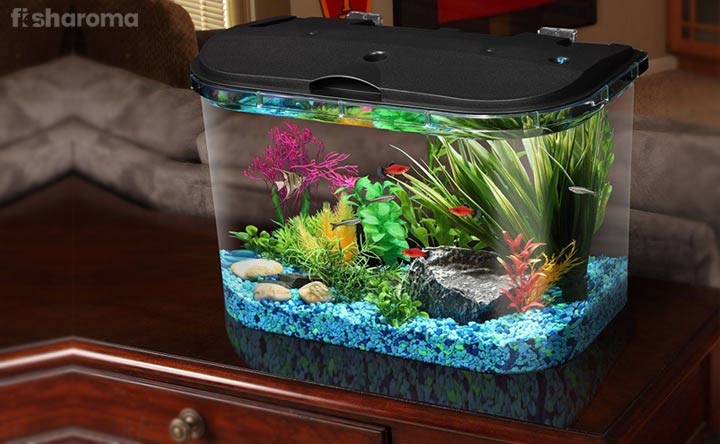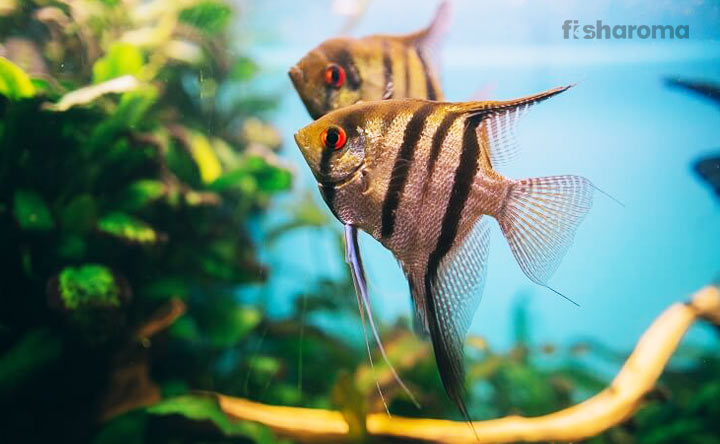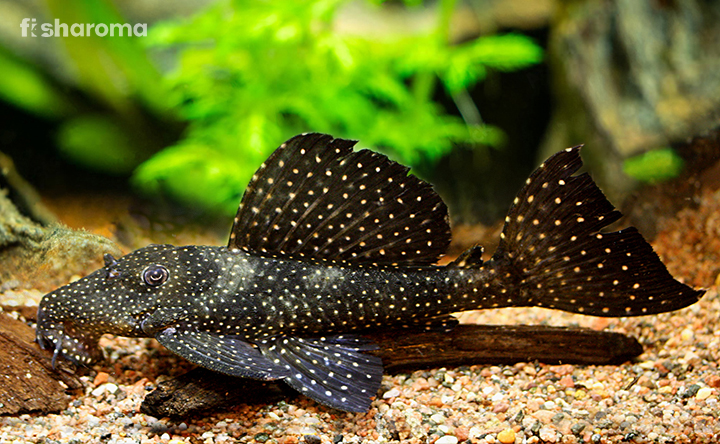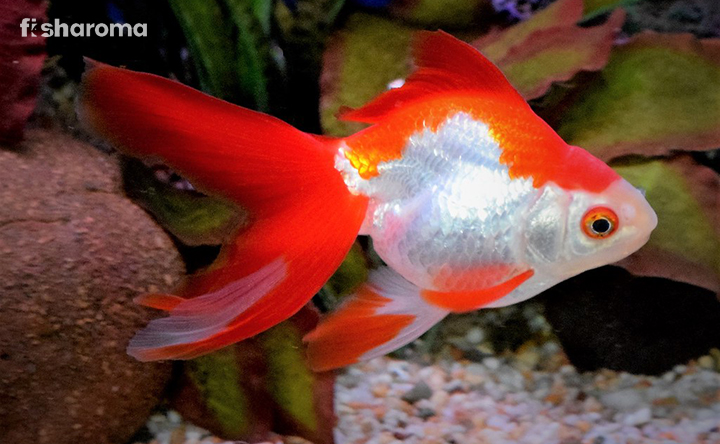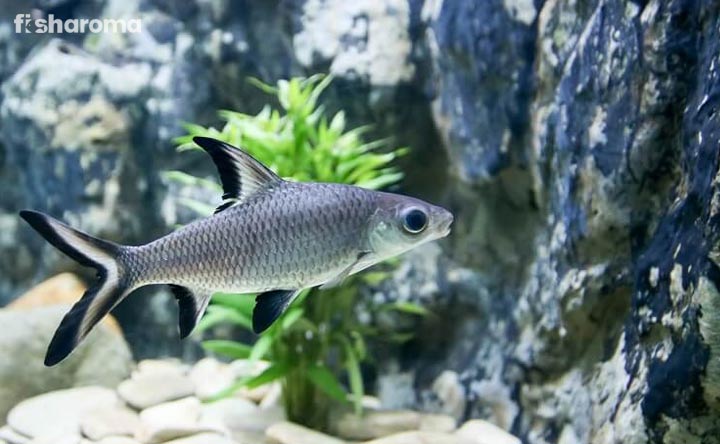Elephant Nose Fish – A Detailed Care Guide To This Electrifying Species
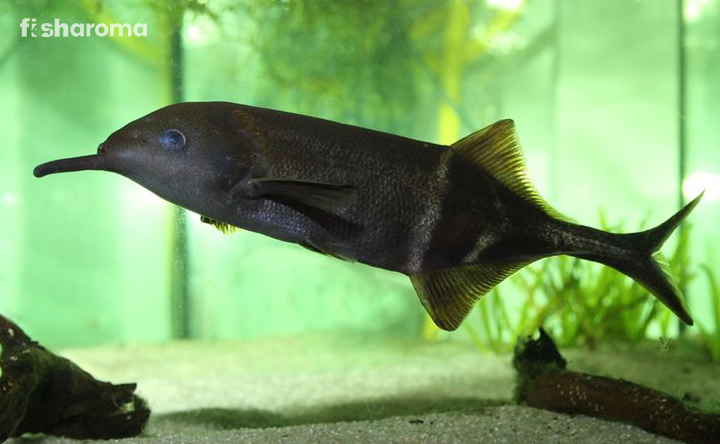
- Origin and Habitat of Elephant Nose Fish
- Appearance of Elephant Nose Fish
- Behaviour of Elephant Nose Fish
- Lifespan of Elephant Nose Fish
- Diet of Elephant Nose Fish
- Tank Requirements of Elephant Nose Fish
- Water Type for Elephant Nose Fish
- Compatibility of Elephant Nose Fish
- Breeding of Elephant Nose Fish
- Diseases of Elephant Nose Fish
- Summary
The Elephant Nose Fish is a different looking species that seems intimidating to potential pet owners. The purpose of this article is to showcase that this is just another freshwater fish, with some unique features and temperamental traits. The fish might not be for beginner aquarists, but it can be properly trained and that sure is an incentive. Caring for it requires commitment from the owner, but is that something exclusive to this fish? Certainly not, so without much further ado, let’s proceed with the extensive study on the fish and its maintenance requirement.
Key Specification Of Elephant Nose Fish
Browse through the table and get a comprehensive idea in the quickest way possible.
| Common Names | Ubangi Mormyrid, Elephant Fish, Long-nosed Elephant Fish, Peters’s Elephant-nose Fish |
| Origin | Africa |
| Lifespan | 6-10 years |
| Colours | Black, grey, and brown |
| Temperament | Usually Peaceful |
| Size | 9-13 inches |
| Diet | Carnivorous |
| Reproduction | Not recorded in the home aquarium |
| Maintenance Requirements | Moderately difficult |
| Tank Size | Around 30 gallons |
Overview
The Elephant Nose Fish, not only looks exotic, rather it is, to a great extent. It has a wide nose, similar to an elephant’s trunk. With a long lifespan, this species makes a wonderful pet choice. There is not sufficient data when it comes to its breeding in captivity, and generally, all specimens come from the wild. They need a large tank to roam around throughout the day. Their dietary need includes pure carnivorous things.
Origin And Habitat Of Elephant Nose Fish
The western and central parts of Africa, especially the basins of Ogun River, Chari River, Niger River are the origin places of Elephant Nose Fish.
These fishes stay at the bottom where the water has a slow current and it’s very muddy. They find themselves in areas where there is a lot of vegetation. The entire surrounding makes the water bodies dark and the fishes lack their visibility owing to their stay in such areas.
Appearance Of Elephant Nose Fish
The Elephant Nose Fish has a slender and flat body with a long snout or “nose”. The nose is quite long and it makes the species similar to Swordfish. Their pectoral and dorsal fins are the same and they have almost 100% similarities in terms of their colour, size, and shape. The caudal fin is small and forked that is connected to their caudal peduncle.
The nose or the trunk, whatever you may call it, is officially known as Schnauzenorgan. It is actually an important part of their body that helps the fishes sense their surroundings.
Size
The fish is usually 9 inches long if you don’t count the exceptions. Although, since all of them are basically wild, there is a symmetry in nature and most of them are around the same size. If you are lucky enough to come across exceptional fishes, then you may find 10-13 inches long Elephant Nose Fish. Mind it, they are the rarest of rare kinds.
Many breeders sell fishes advertising that their actual size is half of their standard size, implying the fishes can grow a maximum of around 5 inches. This is not entirely true because that is a juvenile size and never an adult. The exception that occurs in terms of their size is always the longer one and never does it ever become shorter than their average size.
Colour
The base colour of the fish is either dark brown, jet black or grey and their belly often has the same hues in a much paler shade. There are some white to yellowish stripes that run along the sides and reach the fins. The caudal fin is entirely black, which is often similar to their whole body.
Behaviour Of Elephant Nose Fish
The fish is usually extremely docile and showcase no aggression until provoked. This fish likes to stay in its own world, and never shows any interest in others unless there is some need. Elephant Nose Fishes are nocturnal creatures and they have no eyesight. This is because in their natural habitat they stay in such conditions where there is hardly any light penetrating in their surroundings. This has led to their almost blindness and that is where their “nose” comes in.
Their “nose” has some electric receptors, and so do their bodies. Since they have really low vision, similar to blindness, they can sense the presence of other fishes or creatures from the electric emission that other fishes do. They catch the electric vibes and that is how they can understand whoever is around them.
They are also territorial and this is mostly prominent when they find the same kind in their close vicinity. The fishes are otherwise good to be around, as long as different species are concerned.
By nature, these fishes love to stay at the bottom of the tank, meaning they are bottom-dwellers and mostly prefer to be bottom feeders. Although that doesn’t mean that they never explore other zones of the water. If they think, or sense that there is something worth their attention going on at the upper or middle zone of the water, they wouldn’t hesitate to come and figure it out before going back to the base.
Their behavioural traits are best observed when they are kept alone because these fishes can happily stay in a solitary state. Although they are good with other fishes, they never get along with their own kind, without being a bully. Overall they have a sensitive nature and they would love to use the hiding structures that may be inside the tank. With plants and other caves, they would feel comfortable and secure. Otherwise, they might be stressed and that is detrimental to their health.
Lifespan Of Elephant Nose Fish
The fish can live for 6-10 long years and there are some instances where individual fish can live for even 11 years. However, that is actually an exception and hobbyists shouldn’t expect that to be their usual lifespan in captivity. What matters the most rather than a long lifespan is a healthy life, regardless of its length. You must provide optimum water conditions and dietary needs without any compromise so that the fish gets a healthy life.
Diet Of Elephant Nose Fish
The Elephant Nose Fish is actually a carnivorous fish, always eating larvae and insects in the wild. Their scavenging nature is accentuated when they find food with their nose first, moving it around using the nose, and then consuming it. The entire process is similar to elephants who use their trunk while eating. Many breeders or rather aquarists have tried pellets and flake food, with a very little success rate. It is always ideal to provide Brine shrimp, tubifex, earthworms, black fly, and mosquito larvae, all in chopped pieces.
If you can train the fish to feed from your hand, it will after a certain time identify your presence and will definitely swim upward to take food from you. You must be patient while you are making the fish accustomed to it. These fishes take time to consume food, so you can’t rush them.
Tank Requirements Of Elephant Nose Fish
The Elephant Nose Fish, with its unique feature, requires a large tank, where it can enjoy its space without anybody’s intrusion. We have already mentioned that they don’t mind being solitary, they just need the right environment to thrive in, with or without compatible tank mates. There are lots of additional aspects in terms of plants, tank size, decorations, and many others that we will discuss elaborately.
Tank Size
A single fish needs at least a 50-gallon tank for its solo habitation. The more, always the better, but not less than that. If you keep other fishes with it, you should opt for a bigger tank, ensuring that every fish has its own individual space to swim in. For an Elephant Nose Fish-specific tank, you have to take into consideration the fact that it needs other things like plants and other decorative things inside. So, a bigger tank is the best way to go.
Tank Lid
Wild fishes have a common tendency to jump every now and then, so you need to provide a suitable cover for your tank. The lid will help the fish to stay inside and also it will act as a shelter against all those unwanted ingredients that might pollute the water.
Substrate
The bottom feeder fish needs a soft substrate and it shouldn’t have any sharp or pointed objects, which might be injurious for the Elephant Nose Fish. We have already told that despite having all those electroreceptors all over their body, they are sensitive. So, prepare a base that is soft, and we suggest you go for a sandy surface.
This is also because even with the slightest injury, the “nose” is prone to get badly infected. You can also try soft gravel to some extent, but a sand substrate is the best option for such fishes.
Filter
The tank for your Elephant-Nose Fish needs a proper Canister Filter for aeration purposes. These fishes are in need of a good amount of oxygen all the time, so you can’t deny the requirement of the filter. These sensitive fishes can’t survive if the water quality is too bad, so a filter is necessary. Also, as far as the water current or flow is concerned, they prefer steady water or very slow-moving water, so the filter should be adjustable so that they don’t mess up the water current with fast flow.
Ornamentations
The fish needs a lot of ornamentation in its surroundings because it prefers to explore and use the hiding caves. You can keep lots of driftwoods, overhung structures, some upside-down flower vases, pipes, some smooth rocks, and steady decorative things that will provide shelter to the Elephant Nose Fish. Make sure that there is no metal equipment inside the tank because the fishes are extremely sensitive when they come in close contact with metal objects.
Lighting
We have already described in the habitat section that their habitat is dark and they don’t get to feel the light. So, you have to play cleverly for the tank decoration. Install some low-powered light ensuring their subdued effect.
Presence Of Flora
The tank needs some low-light plants that can fully grow on the sand surface. This is important because these fishes use plantations for their shelter. The plants that you choose need to be strong as well, and in this case, we recommend always going for anchored plants in more numbers than floating plants. We believe that you should opt for
- Java Fern
- Water Wisteria
- Java Moss
- Hornwort
- Anubias
- Vallisneria
- Staurogyne Repens
- Duckweed
Cleaning Method
The water should be cleaned, and so are the tank essentials. Just putting stuff inside the aquarium can’t be called caring, rather, the tougher job is to maintain each and everything and clean them separately. The artificial hiding structures need to be cleaned in such a way that there can’t be any chemicals that might be harmful to the fishes. In fact, natural objects need not be cleaned or rinsed off. You can clean the substrate as there might be some unfinished food. Such cleansing would prevent the algae growth on an effective basis and that is good for the fish.
Water Type For Elephant Nose Fish
These fishes need extremely consistent water conditions otherwise their health can be badly affected. To keep up the water parameters you need to make sure that the water is okay and for which testing, it every now and then is required. It might be an overwhelming process, but there is no escaping because the slightest change in the water can be lethal for your Elephant Nose Fish. You have to dedicatedly maintain the standard condition of the water at all times. Mineral and other ingredients are also important to be at per the requirements of the sensitive fishes.
Temperature
The water temperature should be ranging within 22.7-27.7 Degrees Celsius. It would be great if the temperature stays somewhere in the middle of the given range. If you can, try to maintain it around 25.5 Degrees Celsius. We know it is difficult to maintain the exact temperature, that is why we suggested you the range.
pH Level
The ideal pH range for the water should be 6.5-7.2. If you can, maintain it at 6.9. There might be some unwanted situations where the pH range can go up. In that scenario, you can use some monitoring methods to lower the pH range.
Hardness
The required carbonate hardness for the water is 5-15 dKH. You can keep it within 10 as well.
Chemical Equation
The water needs to have an ammonia content of 0 ppm and both the nitrite and nitrate should be <5 ppm.
Replacement Procedure
The partial water change should be done on a weekly basis and you can replace 10-15% of water at one go. More than that is not advisable because that can shock the fish, resulting in acute stress.
Compatibility Of Elephant Nose Fish
The Elephant Nose Fish can be an excellent solo species in the tank because, with others of the same kind, they might show territorial aggression. The tank needs to be really large, with spacious diameters, so that each of them can actually have their own territory without disturbing the other.
Suitable Tank Mates
The Elephant Nose Fish, surprisingly, can peacefully stay with other species with similar behaviour. The tank mates need to be gentle and docile at the same time. Make sure proper space is allotted for each fish. These are the fishes you can think of keeping with an Elephant Nose Fish
- Pearl Gourami
- Dwarf Gourami
- Honey Gourami
- Sparkling Gourami
- Bichir
- African Butterfly Fish
- Black Ghost Knife Fish
- Cory Catfish
- Congo Tetra
- Discus
- Angelfish
These fishes are moderately medium-sized and peaceful, perfect to be staying with your Elephant Nose Tetra.
Unsuitable Tank Mates
Aggressive and super active fishes are not good choices for Elephant Nose Fish. We in fact don’t recommend keeping the two male Elephant Nose Fishes together as well. Remember, that they are mostly peaceful, so boisterous ones, or who have a habit to bully other species shouldn’t be kept with these fishes. Also, there are some solitary species, that are completely out of these Elephant Nose Fishes’ league.
Breeding Of Elephant Nose Fish
Breeding in captivity has not been possible, at least there has not been any single case recorded so far. So, there isn’t much information that can enlighten us regarding its breeding.
The commercial breeders where you can buy or get the Elephant Nose Fish from, actually catch them from the wild.
The reason behind this difficulty is that when wild Elephant Nose Fishes are kept in captivity, the male and female fishes go through some changes regarding their electric organ. That is confusing with their dimorphism. So much so, that fishes themselves become confused identifying their male or female counterparts. That is why breeding or mating is next to impossible because they can’t approach each other without being sure of the other one’s gender.
Diseases Of Elephant Nose Fish
The fishes can get some serious bacterial, parasitic infections and the unfortunate thing is that they are very sensitive to some medications. So, it is always recommended to maintain the water condition so that you can prevent such ailments as much as possible. The common problems of Elephant Nose Fish are fin routine where the fin is deeply affected. Another one is, Ich, where it can affect the whole body. Gill and skin fluke is another major problem that can occur under poor water quality.
Summary
Elephant Nose Fish is a freshwater fish, with good size and docile temperament. It has some specific requirements because the species is sensitive to many things. Their breeding in captivity has not been possible because they undergo some changes in home aquariums and it has a lot to do with their orientations. They are intelligent and can identify their owner, especially during feeding time. Although proper training is required for that desired effect. The fish is carnivorous and requires a standard protein-enriched diet.
Other Similar Care Guides
We have more articles on different fish species, the ones you can pet. Hope you will like them as much as you have liked this one.
- Diamond Tetra – The shiny fish belongs to the majestically colourful Tetra Group. It is a peaceful fish by nature who has a natural scavenging tendency, especially when it roams in groups.
- Peacock Eel – Unlike its name, this is a fish, native to South Asian freshwaters. The Eel-like body has earned its name of this nocturnal species, who are mostly bottom-dwellers.
- Rosy Red Minnow – The tiny species is mostly used as feeder fish, but people often pet it because of its huge tolerance power. These fishes stay in groups all the time and jovially explore their surroundings and the bottom of the tank.

